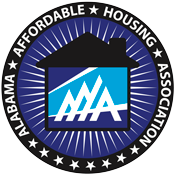
CARH’S BROADCAST E-MAIL – Regulatory Update
May 7, 2015
Last year, Rural Development (RD) staff and industry stakeholders – including CARH Board of Director members, Don Beaty of The Summit Group and Tanya Eastwood of Greystone Affordable Housing Initiatives and CARH member David Cooper of The Woda Group – began the Lean Six Sigma business improvement process to streamline the transfer process. At a special session during CARH’s Midyear Meeting, Beverly Casey from the national RD provided Version 3.0 of the preliminary assessment template for CARH members to review and provide feedback.
Today, RD released Version 4.0 of the Preliminary Assessment Tool. Bryan Hooper, Deputy Administrator for Multifamily Housing, made the following statement with the release:
“I am pleased to announce the availability of Version 4.0 of the Preliminary Assessment Tool (PAT). The new PAT will assist transfer applicants, RD field staff and other users in developing transfer and MPR applications, while simplifying RD’s review and approval of transfer applications.
This tool is in response to RD’s Lean Six Sigma business process improvement effort, which has teamed RD’s National Office staff and field office staff with external stakeholders to review the transfer process and recommend actions to streamline the process. Those recommendations included improving the template for the MPR demonstration program and regular transfers. The tool is also intended to provide greater flexibility in applying Agency program requirements and the core program underwriting standards necessary to unlock potential loan transfers and encourage more effective use of the MPR demonstration program to preserve needed housing units.
As part of the ongoing MFH Transfer business process improvement effort, the Multifamily Preservation and Direct Loan Division (MPDLD) staff developed a PAT to underwrite new transfers and MPR applications that is now available for use by applicants, borrowers and Agency staff. The PAT includes new underwriting guidance that will be included in revisions to HB-3-3560. MPDLD staff is currently working on those revisions. A UL providing more details on the new underwriting guidance will also be released shortly.
RD staff should begin using the PAT for transfers and MPR transaction underwriting in accordance with the instructions below. RD should also strongly encourage use of the PAT by transfer and MPR applicants – and the guidelines contained in the PAT – for the underwriting of transfer applications and transfers selected to participate in the MPR program (MPR applications). The information presented by using this tool will assist applicants and Agency staff in preliminary feasibility analyses and timely processing of applications by early identification of issues needing to be addressed during the review and approval process.
In order to eliminate confusion over the use of the PAT for transactions that are currently in process, the following principles will apply:
- Since the PAT and its new standards were not available prior to December 16, 2014, any transactions submitted prior to that date should use the standards in the former underwriting tools (UWT).
- For transactions submitted after December 16, 2014, if a borrower relied on the PAT guidelines to develop a transfer or MPR application they have submitted, the existing transfer or MPR application should be underwritten using the PAT guidelines.
- For transactions submitted after December 16, 2014, if a borrower has NOT relied on the PAT’s guidelines in a transfer or MPR application they have submitted, the transfer or MPR application should be underwritten using the guidelines as reflected in the former UWT. If such a borrower would like to use the PAT guidelines, they must resubmit the transfer or MPR application to reflect the use of the PAT principles.
- An existing transfer or MPR application may be modified if the applicant submits: a) a completed PAT, b) new documents necessary to reflect underwriting based on the PAT standards, and c) a letter or e-mail from the applicant indicating that they want the transfer or the MPR application underwritten under the PAT. All other application documents submitted as part of the previous application will be used in the application evaluation process using the new PAT. This assumes that RD has received all other documents to form a complete application package.
Version 4.0 of the PAT is posted to the public website for applicants when developing transfer and MPR applications and for initial discussions on feasibility with the RD field staff responsible for application intake. NOTE: The PAT is not a substitute for the applicant’s required submission of full and complete transfer and MPR applications as specified in the respective program handbooks and/or the Notice of Funding Availability requirements. Applicants and borrowers may obtain a copy of the latest PAT from either:
http://www.rd.usda.gov/programs-services/multi-family-housing-direct-loans or
We are excited to roll out this new tool for the benefit of our customers and RD field staff, because we believe it will simplify, streamline, and provide greater transparency to the transfer process. However, we will continue to collect comments and suggestions for improvement as we prepare future enhancements to the PAT. We expect to monitor and collect feedback through the MPR cycle, so we do not anticipate releasing the next version of the PAT until approximately December 1.
To further assist all users of the PAT, we will be providing training to both RD field staff and industry users in the near future. Please stay tuned for further announcements on training.
Please note that CARH is analyzing this new version of the Preliminary Assessment Tool. In-depth discussion will take place at CARH’s Annual Meeting and Legislative Conference at a special General Session on Tuesday, June 16th: “Preservation Roundtable and Workshop.” This session will run from 11:00 a.m.-12:30 p.m. In the meantime if CARH members have comments or concerns, please send them to the national CARH office at carh@carh.org.
Don’t miss CARH’s 2015 Annual Meeting & Legislative Conference
June 14-16, 2015, at the Ritz Carlton Pentagon City!
Council for Affordable and Rural Housing
1112 King Street, Alexandria, VA 22314
703-837-9001 Phone; 703-837-8467 Fax
carh@carh.org; www.carh.org
